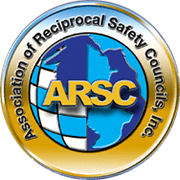By Jennifer Williams
EHS Program Manager
When a fire happens at your facility are you truly prepared? Have you worked with and developed a relationship with your local fire department or do you just rely on “cookie cutter” emergency response plans? According to the National Fire Protection Agency statistics there are 37,000 industrial fires per year that result in 18 deaths 279 injuries and 1 billion dollars in direct property damage.
As a safety professional we are focused on preventing fires. However, if any error’s occur in that system or natural event strikes your facility, are you and the fire department prepared to keep the impact low to your site and the community around you?
Start building your relationship with the fire department immediately! Contact the training department, the Fire Chief invite them over for lunch with a tour of your facility and fire systems. You may think the Fire Marshall comes out every year and that is our relationship. However, they don’t train the guys who are coming out to fight the fire or entering the building in total darkness for search and rescue. You may even have site owned fire hydrants or foam system they can hook into. Are the hook ups compatible with your local fire department hose hook ups? While they are at your site have the fire department try to hook into and learn how to operate the system. Taking this time to work with the fire department can set them up for success in the event they are needed at your facility.
What about confined space rescue? I can’t express how many times I have heard, “We will utilize the local fire department for rescue.” WRONG! Most of the time if they are coming to enter your facility to rescue someone in a confined space the rescue turns more into a recovery. Do you know how much time it takes for them to set up the equipment when they are out of practice? Does their rescue equipment fit over all your confined spaces or is there an obstruction that will not allow the tri-pod to be set up? What can your site do to assist in improving the set-up time to make sure that the rescue team has everything they need to do a confined space rescue. When I invited them to one of my facilities to do this training, they were very appreciative and didn’t know why more companies in the area do not invite them to do this. When they have been on my sites, they helped us identify places to install anchor points and other emergency response equipment near our confined spaces to improve the rescue time.
Let’s all hope the engineered safety measures prevent any events from occurring at your site, but if not make sure you are prepared. Make sure the rescue at your site will go as smooth as possible to lower the impact on your people, your site and your community.
